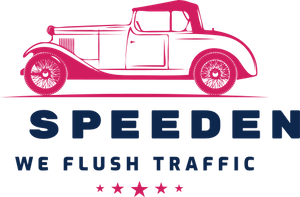Project Description
In this project we are undertaking two challenges.
The first challenge is the traffic congestion problem in the CBD area. As per our research in the US alone congestion cost 305 billion dollars which is an increase of 10 billion from the previous year. One of the main reasons for traffic congestion during the peak hours is the lack of parking spaces. We all have faced the scenario where we enter in the CBD area but our usual parking space has already been taken and we are stuck in the congestion looking for as parking space. Building new parking spaces would be the easy way out but it has its limitations. With the growing population we need to use data and the emerging technologies of AI/ML and IOT to find a feasible solution for this problem.
To solve this problem we propose an app Speeden which will use IOT, AI/ML and dynamic routing to solve this problem. The first step would be Smart parking. We will leverage IOT to provide a live tracking of the parking spaces available and the best parking space to chose based on the user's location. We will incentivise the user to choose parking spaces outside the CBD area by providing it a cheaper price. Long route buses take time to reach a particular bus stop. We recommend short route buses running from the parking spaces to CBD. These buses will be provided to the user for free or at minimal price. The user would be able to choose the time of arrival at the parking space and book the bus from there on. The buses would be of smaller sizes so that they in return do not result in congestion and can be easily filled at peak times. Using the app the user can track the live location of the bus and the route to take. AI/ML would be leveraged to generate statistics and insights about the congested areas and provide recommendations to the user.
The second challenge taken up in this project is public transport for the future. We envision that the app can be upgraded to include the future of public transport. The three things we envision are:
1. The buses would be replaced with driverless electric buses that would use AI/ML to service the users need. The integration with the apps would remain the same. Having electric buses would be environment friendly and help in sustainbly developing our public transport system.
2. Induction charged roads is the second technology that would help in charging the electric buses. The buses can be charged on the road without the need to stop. The buses can shift on the induction roads and they would be charged automatically.
3. Use of driverless pods from the parking spaces. These pods would be a point to point service and will take users from the parking spaces to the stations in the CBD. These would be provided at minimal prices to encourage people to use these parking spaces.
We also envisioned the use of dynamic bus stops instead of the fixed traditional bus stops but this idea needs a lot more in depth analysis and hence has not been included in the video.


